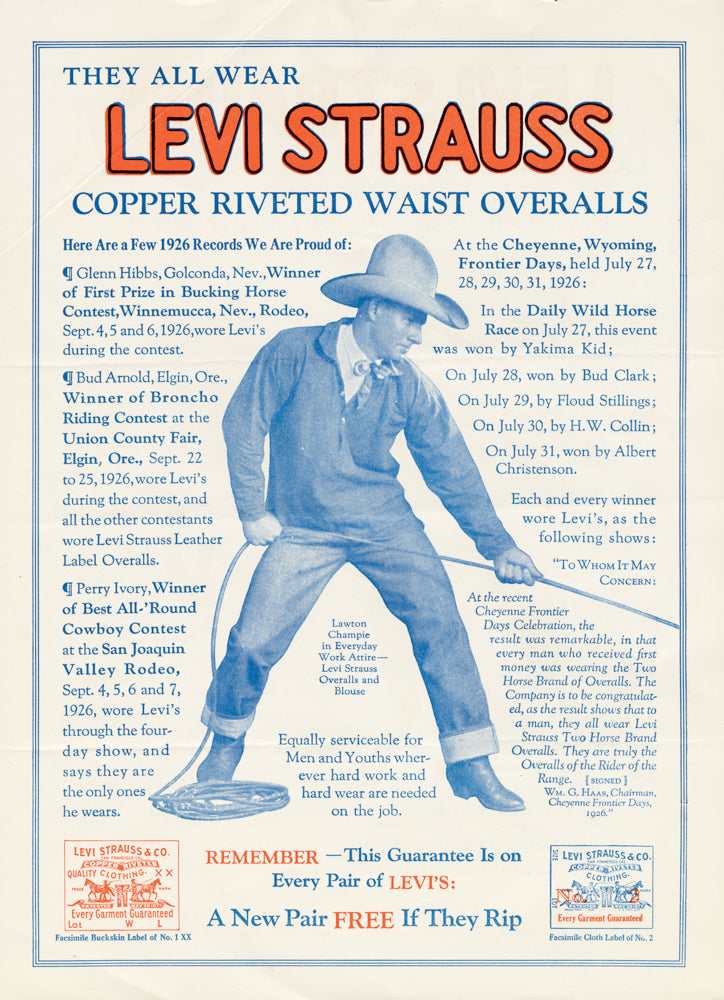
Levi Strauss CO.
LEVI STRAUSS CO.



THE BLUES ARE BORN
Passing through the flow of morning commuters, I made my way to Platform 13, where a nine-car private train had been berthed overnight in the Parkinson Brothers’-designed Union Station in Los Angeles. The brainchild of artist Doug Aitken, the train’s layover in L.A. was the last in a series of nine stops in the cross-country, much-hyped “nomadic happening,” which Aitken had titled “Station to Station.” With every stop he’d pulled together an ambitious series of concerts and site-specific installations, with a contributing roster of art-world heavies — Urs Fischer, Carsten Höller, Olafur Eliason, among them — as well as the likes of Cat Power, Beck, and Patti Smith.



The pervading atmosphere among the train’s rag-tag passengers — artist Jack Pierson and Faith No More front-man Roddy Bottum among them — was less one of cliquish cohorts than an ebullient meeting of creative minds relishing the opportunity to come together. Much of the youthful air about the whole experience was perhaps due in large part to the presence of Aitken’s patron, Levi’s, and it’s creative team; a gathering of bright young things who lent the Aitken sojourn a tinge of Kerouac’s heady, road-trip idealism.



“The Father of Functional Fashion”.
That Levi’s would be involved in Aitken’s artistic whistle-stop tour is in keeping with a brand that, over the last 150-plus years, has found its way into the lexicon of Americana. Founded in 1853, with the first patent for a riveted “blue” jean filed in 1873, the brand has come to embody an archetypal American ethos that blends visions of the John Wayne cowboy with bikers of the Brando ilk as well as brash beat poets espousing mantras of revolution and free love. Aware of their place in this history, Levi’s has taken an active, if often subtle role in the nurturing of artists and innovators.


Leaving L.A., the train set out on the last leg of a journey that began in New York, hugging the rocky, ocean-swept vistas of the California coastline, snaking its way to its final destination in Oakland. Throughout the day, passengers passed between cars, dropping in on recording sessions or stopping to watch Aitken edit footage from the previous day’s events. In one car, decked out by Levis, small groups gathered to discuss the previous night’s performance, tweet from a specially internet-rigged typewriter, or reflect upon the passing landscape. Taking a lull in the buzz of activity Len Peltier, Levi’s VP of Global Creative Direction, sat down to chat about the brand and its ongoing relationship with artists. Wearing a suede cowboy hat the silver-haired, ruggedly handsome Peltier looked every part the Levi’s ambassador – 501’s included.


He was quick to point out that many of the railroad workers who had built the tracks the train was traveling on were no doubt wearing Levi’s denim as work-wear at the time. That the brand was present at the creation of great projects underscores a brand mission that is less about being a part of history than making it. Joining forces with Doug Aitken for “Station to Station” is only the latest in a series of collaborations between Levi’s and leading artists and innovators. In 2006, the brand partnered with the Warhol Foundation on the production of its Warhol Factory X collection, while in 2008 Damien Hirst joined forces with Levi’s to produce a collection that featured his iconic splatter paintings and skulls.


In addition to collaborations with artists on products, Levi’s has worked with the art-world darling Ryan McGinley to shoot spots, as well as directors Carry Fukunaga and M. Blash for their mesmerizing “Go Forth” campaigns that featured the distinctive voice of Walt Whitman reciting his poem, “Pioneer! O Pioneer.” Joining forces with brands is nothing new for artists: Murakami and Richard Prince collaborated with Louis Vuitton, while Jenny Holzer created a one-off series for Keds.



"Well-designed real estate in tores both large and small. As Levis grew through the 1950s, so did its presence in the windows of its retailers."
What makes “Station to Station” so unique is the sheer scale of it, and for Levi’s the size of the project was both its biggest allure and its biggest gamble. For Aitken, well known for installations that include public elements (his 2007 film “Sleepwalker” was projected onto the facades of seven buildings in Manhattan), “Station to Station” was ultimately an opportunity to unite artists with communities, and the Levi’s model seemed a perfect fit, so to speak.



Pulling into Oakland twelve hours after its departure from Los Angeles, Aitken’s train dazzled onlookers with strips of LED lights that changed colors based on motion. Each of the cars lit up the arriving station with bursts of fluorescent greens, pinks, and blues. Weary from prolonged excitement – all the more heightened by champagne – the train’s denizens disembarked onto the platform, taking one last look at Aitken’s glittering enterprise. Heading out of the station one young passenger best summed the experience up quipping, “That was one train not to miss.”





